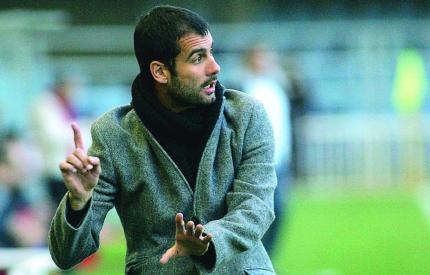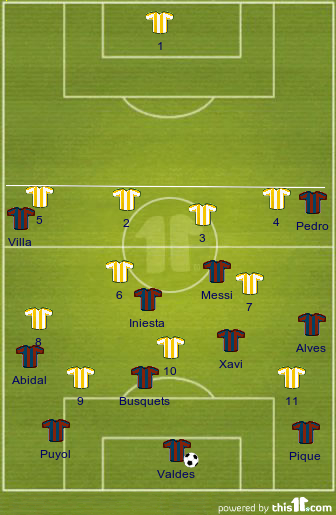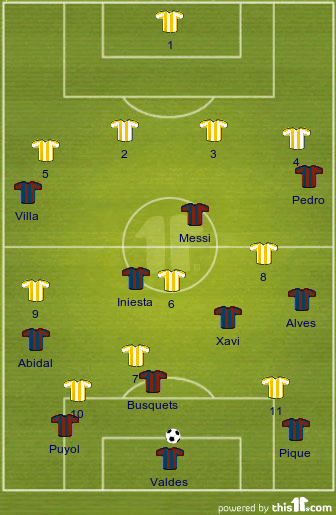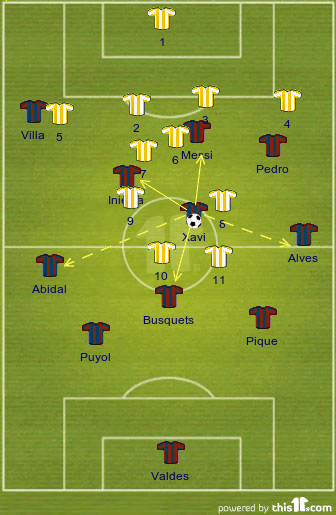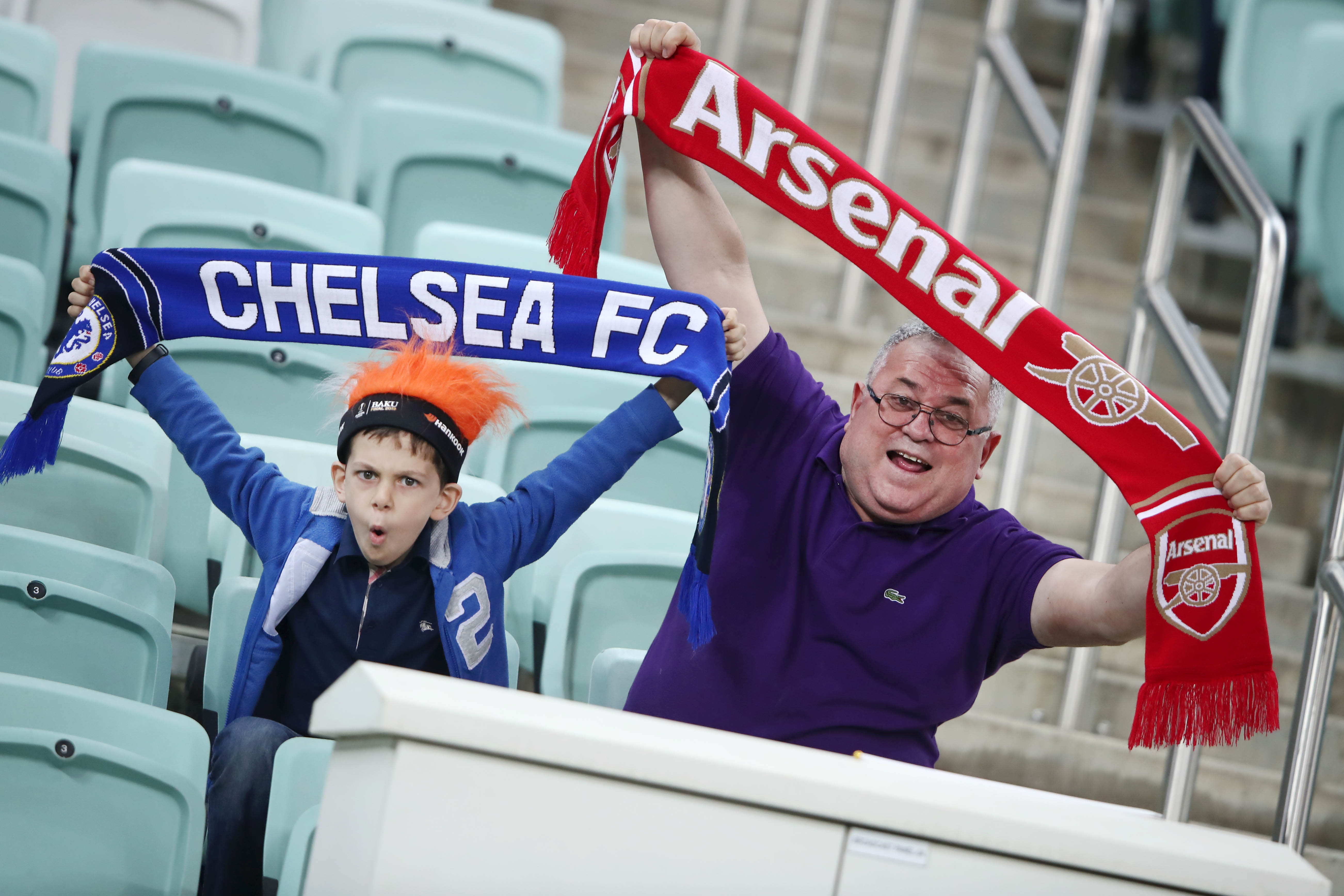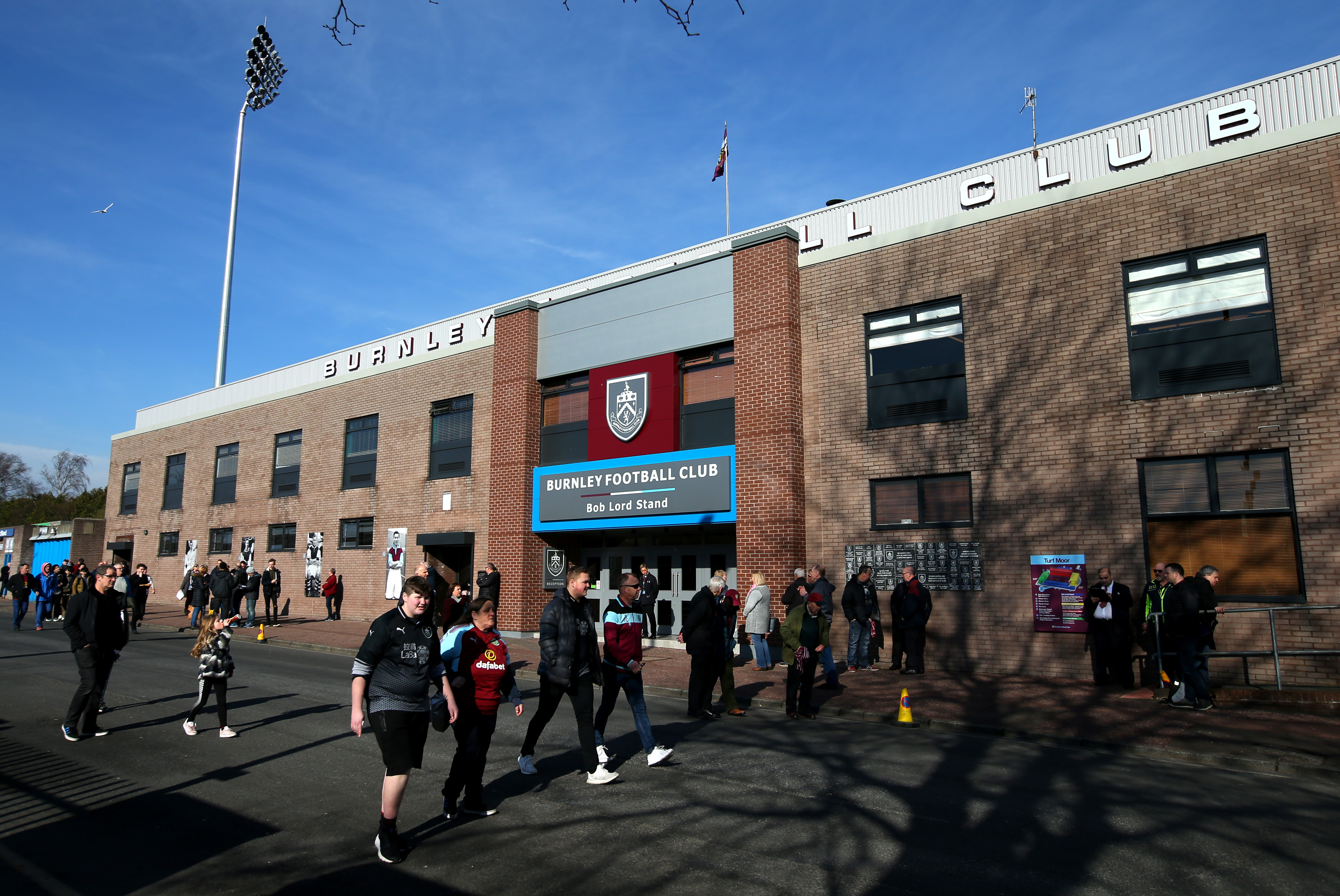Continuation of FC Barcelona; Football is Art – Part 1
We had discussed in Part 1 how this team defends the ball from the opponent.
This may not work to plan every day, since there are different tactics employed to counter this style. There will be times when the opposition escapes the pressing and comes out with the ball or a quality midfielder will be able to play early through ball for his forward. In such case, Barca has to retreat and cover its posts.
Once the game comes closer to Barca’s box, they employ conventional defensive strategies by marking spaces and looking for runs from midfield. Barca’s defenders are not completely incapable of such conventional defending, but they are certainly not best at it. This is the situation they want to avoid or minimize, which is why they consider possession of the football as their primary objective on the field. Also, pressing for the entire 90 minutes will be almost impossible and will eventually tire out players. Barca’s system demands constant movement while in possession, so a high level of fitness is required to play this way. Usually Barca employs two ways of pressing – intensive pressing like they did against Arsenal in first leg of 2010 UCL Quarter Finals, or a little more conservative pressing like in the second leg. Intensive pressing is very difficult to sustain for the whole 90 minutes.
There could be numerous other situations arising out of this way of play, but for any situation a game may throw on them, if they could keep up 65% of possession, they have effectively done most of their defensive work. To conclude how they defend, it’s by defending the ball rather than defending the goal. Sometimes, they keep the ball tor too long, putting the opponent to sleep and frustrating them. To summarize the defensive qualities of this Barca team, they rely on possession to defend, and have been very successful in doing so. Their way is certainly not invincible and depends on team work. Most times they enjoy more than 70% of possession in a match, which effectively means very less time spend in defending their goal.
Then comes the most important part of ‘maintaining possession’, how do they do it?
The art of maintaining possession and creating scoring chances:
Pep Guardiola once said, “In the world of football, there is only two possible scenarios; you have the ball or you don’t have the ball”
No wonder why Barca plays like possession is their divine right. It is rather easy to criticizie their possession, claiming it as useless. But there is a purpose. As described in their defensive tactics, possession is the key for guarding their goal.
This raises the question of how they keep the ball under so much pressure. The opponents are not stupid; not everyone is going to sit behind the ball and let them keep the ball and play. It is a common sight to see in matches where the opponents hound them for the ball, similar to what they themselves do, to get it back. This pressing could happen in two areas, near their own goal with Valdes, Pique and Puyol denied space or could be in midfield with the high lines operating. So how do they counter this? The answer is the space and movement.
Valdes has got the ball and he is looking for options to make a short pass. The opposition says “well, we are not going to allow this to happen; you either go long or clear the ball, we are going to press your centre backs and not allow you options to pass.” Most goalkeepers would panic and would clear the ball to avoid danger. But in Barca’s set up, Valdes will have other options arriving from the midfield to help him out. The way the players spread out to make the pitch look bigger and make themselves available for a pass is a treat to watch.
Let’s look at the diagram where the opposition tries to close down the ball to force back the possession.
Opponents pressing to deny options for Valdes. If this is to succeed, defense has to push up forcing them to hold a high line against Barca.
The pitch is open wide by the centre backs moving to the sides and the defensive midfielder coming in to receive a pass. Note that when the pitch is made wider and the defenders move to the sides, only the opponent’s strikers are not enough to cover the pitch to deny Valdes of a successful pass. There are options all over the pitch. To stop that, additional men from midfield has to come close to Valdes. Note that this way of pressing Barca’s backline invariably creates a high defensive line for the opposition ,which is not so good considering the likes of Messi, Villa and Pedro who are not so slow with the ball. (as depicted in the above image)
The beauty of football is that it is almost impossible to mark out an entire team. The pitch is so big, that covering the ground by running will simply dry anyone out. When a team decides to close down a particular space on the field, another space opens up automatically. This open space is all that is needed for the team under pressure to utilize, and that is when the value of a midfielder or a defensive midfielder who can see the pass to that space becomes invaluable. Xavi is simply one of the best in that business. He could easily turn one or two markers and slip a pass to Iniesta or Messi to initiate a devastating attack.
Space opening for Iniesta and Messi because of the pressure on Barca’s back-line. (This happens when opposition doesn’t want to hold a high line yet wants to put pressure on Barca’s defense)
So when Valdes finds the easy pass to Pique or Puyol is blocked, he goes to Busquets. Now what if Busquets is under pressure? Then Xavi comes into picture. The interesting thing here is both Xavi and Busquets starts coming in deeper to receive the pass, so to keep up the pressure, the opposition have to commit more players to follow them. Now space starts to open up between the opposition’s backline and their forward line who are pressing for the ball deep inside Barca territory. This is a very dangerous situation for the opposition, because the open space is usually occupied by Messi or Iniesta, who will constantly move around these spaces. Any coach will know that it will be suicidal to give space and time to both these players, as they can simply demolish the defensive line.
Remember the above scenario is when the ball is played out from the defense and the opposition doesn’t want to allow Barca to build an attack from their defense.
But not all teams wants to take the risk of frequently giving the space to Messi and Iniesta by pressing high from their own goal line. So, they decide to defend deep by not committing men to press Barca’s defense, instead trying to press their midfield trio of Busquets, Xavi and Iniesta to deny them time and space.
Once Barca reaches the midfield and their defense moves up near the halfway line, they effectively have a small and congested area to work with. The opponents are closer and passing has to be sharp. Losing possession could easily put them under a counter attack, which they have more chances of losing; this is actually where Barca is good at. A pass is not intended to the feet; it is always made into the path of a move where the teammate is expected. This helps to keep the ball away from the defenders.
Pressure on Xavi. He has direct options for short pass to Iniesta or Busquets. If those paths are blocked, He can release the ball to Alves or Abidal who has more space.
This is Xavi’s territory, and he owns it like no one else can. Very few men can command this space like Xavi does. Opponents doesn’t want to give more time and space to Xavi, so he will be under huge pressure. But usually he has loads of options, particularly on the wings. He usually plays the ball out wide to break free from their markers.
This is when both Pedro and Villa comes into picture, playing of the shoulders of the last defender, waiting to break the offside trap. As the ball is played to Alves, the defense shifts to close down that area, thereby creating space for Pedro. Here, Xavi usually gets the return ball and slips a pass to the wings. This is what Barca do time and again. They simply keep the ball within their team with simple patterns of play, utilizing the spaces in the pitch. It is their precision in passing and the movement that enables them to keep the ball rolling within their team’s feet.
We will discuss more about the art of short passing in the next part.
[To be continued]
